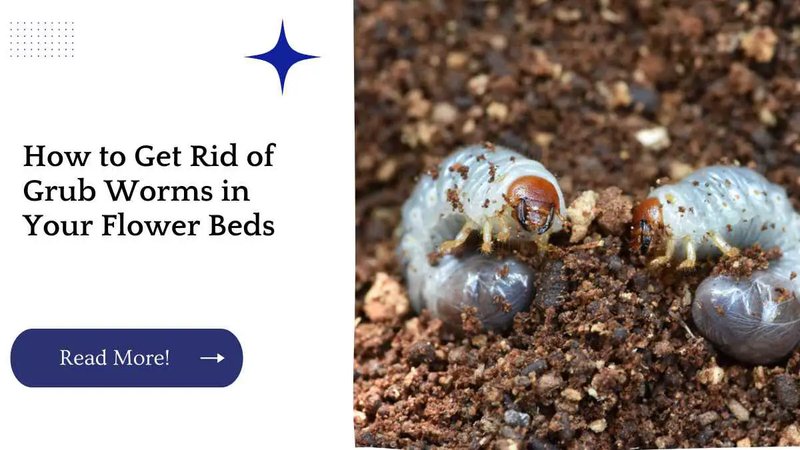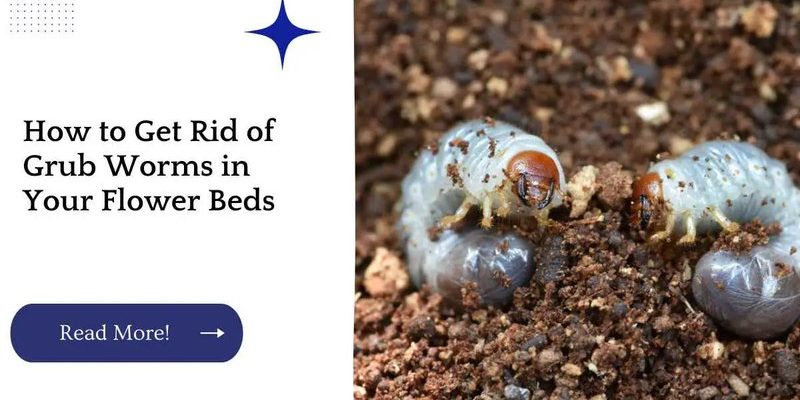
So, what exactly are grub worms? These larvae typically emerge from eggs laid by adult beetles. They tend to live underground, feeding on roots, decaying plant matter, and sometimes even plants themselves. You might be wondering if they’re detrimental to your flowers or merely a part of the natural ecosystem. Let’s dig deeper (pun intended) to uncover the full story!
What Are Grub Worms?
Grub worms are the larval form of several beetle species, including the infamous Japanese beetle and the June bug. They usually look like small, C-shaped, white worms that can be found in the soil under your plants. As they develop, they feed on plant roots, which is why many people worry about them.
Interestingly, not all grub worms are created equal! Some can be more damaging than others, depending on their species. The larvae from certain beetles are notorious for causing significant harm to flower beds and lawns. Others might be less harmful, as they primarily feed on decomposing matter rather than healthy roots. This means that while some grubs may be a gardener’s nightmare, others could be more benign, contributing to soil health.
How Do Grub Worms Affect Flower Beds?
Grub worms can pose a serious threat to your flower beds, especially if their population mushrooms. When they munch on the roots of your beloved blooms, it can lead to wilting or even complete plant death. You might notice symptoms like yellowing leaves, stunted growth, or patches in your flower bed where nothing seems to thrive.
Here’s the thing: the extent of damage depends on how many grubs you have and how healthy your plants are. A small number of grubs might not do much harm, but if they’re left unchecked, they can cause extensive damage, draining the vitality from your flower beds. Essentially, think of them as uninvited guests at a party—they can be manageable at first, but too many can spoil the fun.
Signs of Grub Infestation
It’s important to keep an eye out for signs that grub worms are taking over your flower beds. Some clear indications of their presence include:
- Wilting or yellowing plants
- Soft or mushy soil, indicating root damage
- Birds or other wildlife digging around in your flower beds
- Patchy areas with bare soil or dead flowers
If you notice any of these signs, it’s worth investigating further. Gently digging into the soil can help you spot these little pests. While it may feel unsettling to discover grubs, being proactive can save your precious flowers.
How to Manage Grub Worms
If you find yourself facing a grub worm dilemma, don’t worry! There are several ways to manage these pesky larvae effectively. Here are some methods you might try:
- Natural Predators: Encouraging birds, beneficial insects, or even nematodes can help keep grub populations in check. They see grubs as a tasty snack!
- Manual Removal: If you have a smaller number, you can dig them out by hand. It may sound gross, but it’s effective!
- Organic Pesticides: Products like neem oil can deter grubs without harming beneficial insects. Just apply according to instructions!
- Cultural Practices: Keeping your flower beds healthy with proper watering, fertilization, and mulching can increase their resilience against grubs.
By choosing the right approach, you can ensure that your flower beds stay vibrant and healthy, keeping grub worms at bay.
Preventing Grub Worm Infestation
Prevention is key when it comes to pests like grub worms. Here are some strategies you can implement to protect your flowers proactively:
- Soil Health: Healthy soil means healthy plants! Add organic matter like compost to improve soil texture and nutrients.
- Regular Inspections: Keep an eye on your flower beds to catch any issues early. Regular checks can help you notice wilting plants or signs of digging.
- Timing Planting: Planting flowers during the right season can help establish roots before grubs become active during warmer months.
By maintaining good gardening habits, you can create an environment that’s less inviting to grub worms.
Should You Be Worried?
You might be thinking: Is it worth stressing over grub worms? Well, it depends. If your flower beds are flourishing and healthy, you may not need to fret. A few grubs won’t typically harm robust plants. However, if they’re consistently causing damage, it could be a sign of a larger problem that needs addressing.
Honestly, the key is to stay informed and act when necessary. If you notice substantial damage or an increase in grub populations, then it’s time to take action. A little vigilance can go a long way in preserving the beauty of your garden.
So, are grub worms harmful to flower beds? The answer isn’t black and white. While they can cause significant damage if their numbers get out of hand, a managed approach can keep them in check. With good practices, you can grow a flourishing garden that’s less susceptible to these pesky pests. By staying vigilant and proactive, you can enjoy your flowers without the worry of grub worms ruining your hard work.
Your garden should be a peaceful retreat filled with blooming beauty. With the right understanding of grub worms, you can protect your flower beds and keep them thriving for years to come!

